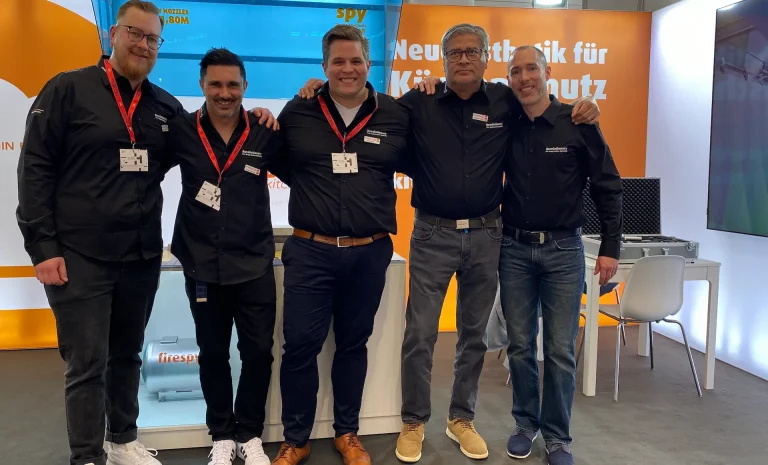
Internorga 2024 Exhibition
Are you interested in what moves the industry? Would you like to know what’s new and exciting in the world of the Hospitality and Restaurant Industry? Then you’ve come to the right place: Internorga
Home » Fire Suppression Systems for Energy Storage Systems (ESS)

Energy Storage System fire study
About the ESS UL 9540A REPORT
UL 9540A is a testing standard developed by Underwriters Laboratories (UL), a global safety certification organization. It specifically focuses on the safety of energy storage systems (ESS), including battery energy storage systems (BESS). The standard establishes stringent criteria and test procedures to evaluate the safety, performance, and reliability of these systems.
Purpose of UL 9540A Testing: The primary objective of UL 9540A testing is to ensure that energy storage systems are safe, reliable, and capable of handling potential hazards. The tests are designed to identify potential risks, such as thermal runaway, explosion, fire, and electrical failures, which could be triggered by internal or external factors.
UL 9540A Test Procedures: The testing procedures under UL 9540A cover various aspects of an energy storage system, including battery modules, battery packs, thermal management systems, and safety controls.
Some of the key tests conducted are:

Images credits by UL Underwriters laboratories
This report presents the findings of experiments conducted by UL Fire Research and Development. The purpose of these experiments was to gather data on the fire and deflagration risks associated with thermal runaway and its spread through energy storage systems (ESS).
The UL 9540A test standard was utilized to systematically evaluate thermal runaway and propagation in energy storage systems at various levels, including cell, module, unit, and installation. The information obtained from these tests can be utilized in designing fire and explosion protection systems for the safe siting and installation of ESS.
During the experiments, in addition to temperature, pressure, and gas measurement instruments placed inside the container, fire service portable gas monitors were positioned both inside and outside the storage container. This placement was done to assess their effectiveness in detecting the byproducts of thermal runaway and to aid fire service size-up decisions.
Thermal imaging | smoke detectors and other electric detections
This type of detection can have failures, and it has been proven, for example, that thermal detection may not work at all in various aspects, such as determining the location of the fire or whether it is already in the suppression phase. Since ESS systems contain numerous electrical and electronic equipment, there is a possibility of damage to the electrical or electronic sensors, compromising the detection system.
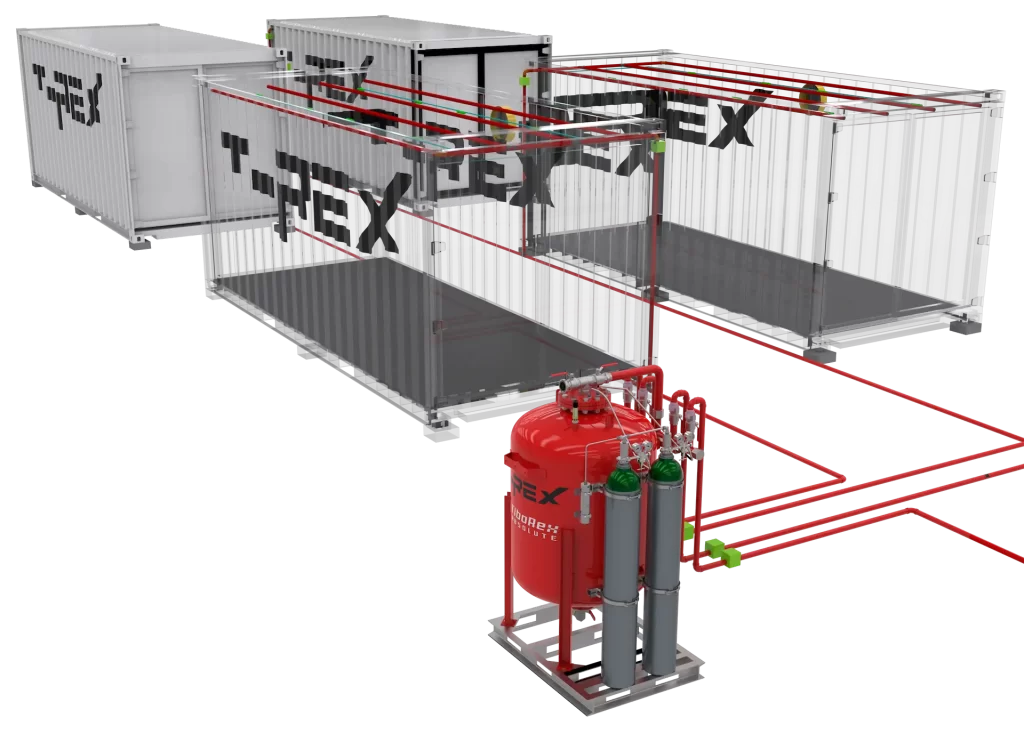
The SPY detectors from Protecfire offer a robust and reliable solution for detection, as they do not rely on power or any other supporting equipment; they are completely independent. The SPY detectors allow for precise localization of the fire, determining exactly where it is because the SPY installed at the fire source is the one that will trigger the alarm.
The T-REX system offers a solution with two different temperature thresholds.
Phase 1 – Activation at low temperatures: Detectors with the lower temperature threshold will activate the ARGON system, which can be considered as initial fire suppression. If the fire is successfully extinguished, the damage is minimized, and adjacent hazards are reduced.
Phase 2 – Activation at higher temperatures: In this case, the fire progression is verified through the increase in temperatures within the ESS. The second set of detectors will be triggered, and a different extinguishing agent, the Tiborex Absolute combined with Argon, comes into action. This mixture is dispersed as an extremely fine mist to cool down the object on fire.
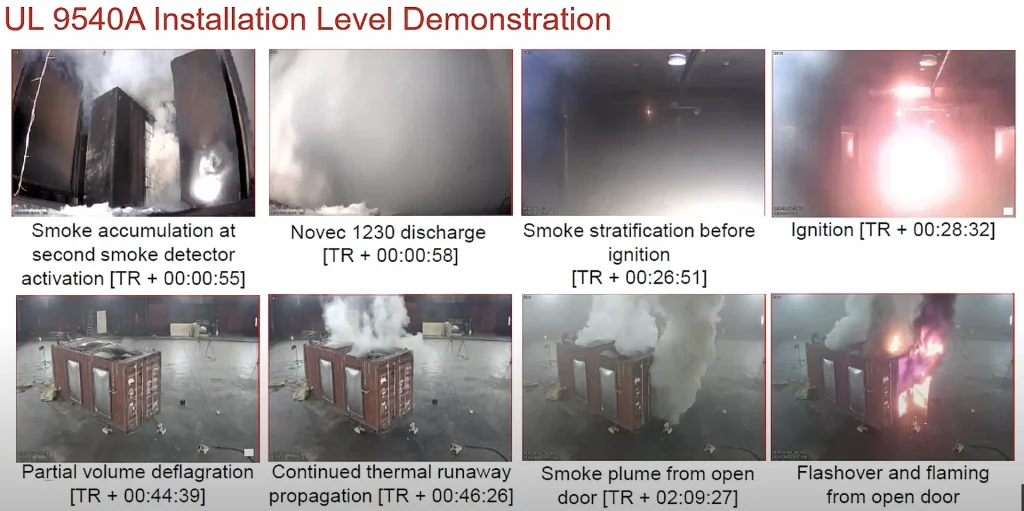
Images credits by UL Underwriters laboratories
Flashover is a phenomenon that occurs during a fire when the temperature and heat radiation within an enclosed space reach a critical level, leading to a rapid and widespread ignition of all combustible materials in the area. It is an extremely dangerous and potentially life-threatening event that can result in a significant escalation of a fire.
During the initial stages of a fire, the heat released by the burning materials gradually increases the temperature of the surrounding environment. As the temperature rises, objects in the space begin to reach their ignition points, and flammable gases and vapors are released. When the conditions are right, these gases and vapors can ignite simultaneously, causing a flashover.
The flashover effect is characterized by a sudden and intense burst of flames that engulfs the entire space. It leads to the ignition of all available combustible materials, including furniture, drapes, carpets, and other contents within the area. The fire quickly transitions from a localized fire to a fully developed fire, with flames spreading rapidly and generating extreme heat, thick smoke, and toxic gases.
Several factors contribute to the occurrence of flashover, including:
Flashover is a highly dangerous situation for firefighters and occupants of a building. It presents significant challenges in terms of rapid fire spread, intense heat, reduced visibility due to thick smoke, and the potential for structural collapse. The high temperatures and toxic gases produced during flashover make it difficult for occupants to escape and for firefighters to enter the area and perform rescue operations.
To mitigate the risk of flashover, preventive measures and fire safety strategies should be implemented, including:
During these tests, there was a significant problem with flashover caused by the opening of doors. When the extinguishing agent is a gas, this effect is even worse, as opening the door causes the environment to lose the extinguishing agent and be replaced by oxygen. At the moment the doors are opened, there is a sudden influx of oxygen, which fuels the fire and can lead to flashover, putting the life of the person opening the door at risk. Gas, being an extinguishing agent that does not cool down surfaces and the environment within the ESS, may reduce the flame but will not lower the temperature enough to prevent immediate reignition.
The T-REX system offers a solution to prevent flashover. In the Tiborex Absolute tank, there is an inlet for the firefighters’ hose, which will continue to inject water in the form of mist into the fire area. It is important to note that only the valves at the detected fire location will open. The remaining units (in the case of multiple containers) will not be affected by the water from the firefighters.
The water flow will decrease the inside temperature, oxygen and heat flux, lowering the chances to have a FlashOver effect.
In this way, we can prevent injuries or even fatalities caused by opening doors in an attempt to extinguish persistent fires.
When it comes to fire suppression systems for Energy Storage Systems (ESS), two commonly used methods are water mist, in the case of T-REX, we use the Tiborex Absolute and Argon gas-based suppression systems. Both approaches have their unique advantages and considerations. Let’s compare the two in the context of ESS.
Suppression Mechanism:
Tiborex Absolute Mist: Fine spray systems use fine droplets of liquid to suppress fires. The mist absorbs heat, cools the fire, and displaces oxygen, reducing the fire’s intensity. It can also provide a physical barrier to prevent fire spread.
Argon Gas Suppression: Gas suppression systems utilize specific extinguishing agents, such as inert gases (e.g. Argon) to suppress fires. The gas displaces oxygen, interrupting the combustion process and extinguishing the fire.
Effectiveness:
Equipment Compatibility:
Environmental Considerations:
Fine Spray mist: Tiborex Absolute is an environmentally friendly extinguishing agent. It does not contribute to ozone depletion or global warming. However, mist systems may consume a significant amount of liquid during suppression, and proper disposal or recycling measures should be in place.
Gas Suppression: Argon Gas-based systems offer clean agents that do not leave residue, minimizing damage and cleanup.
3 stages fire suppression for ESS
Stage 1
Stage 2
Stage 3
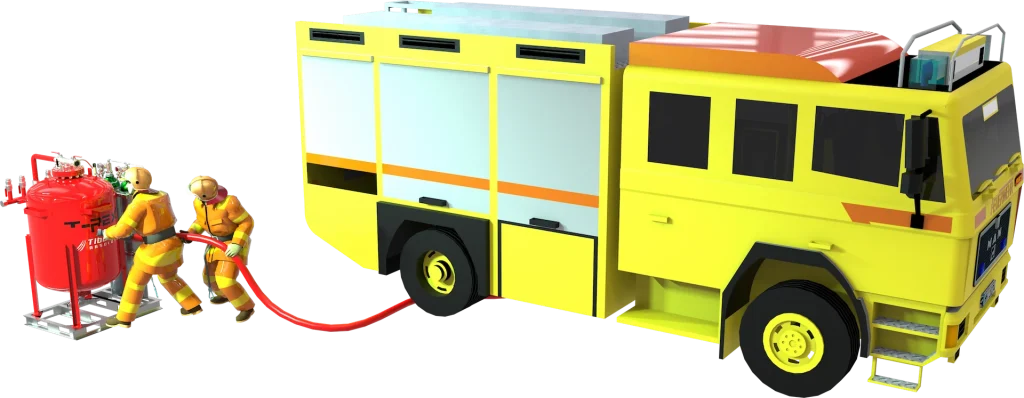
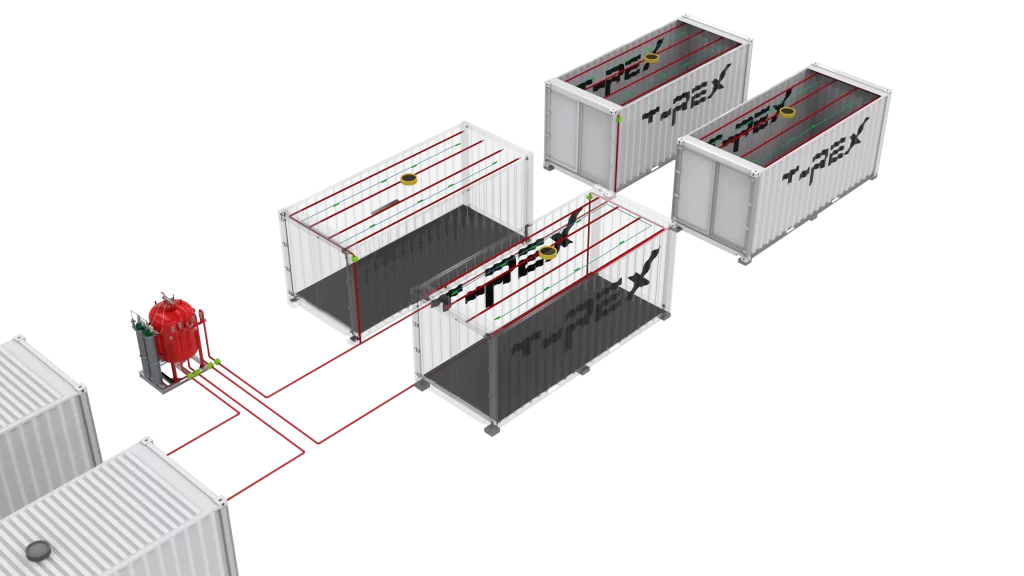
Share this:

Are you interested in what moves the industry? Would you like to know what’s new and exciting in the world of the Hospitality and Restaurant Industry? Then you’ve come to the right place: Internorga
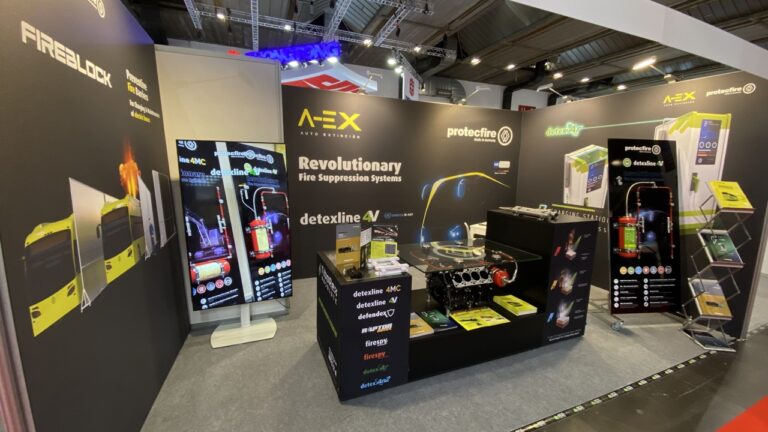
BusWorld 2023 exhibition in Brussels.
ProtecFire and A-EX point to the future of Bus Safety: A Recap of Success at the International Trade Fair.
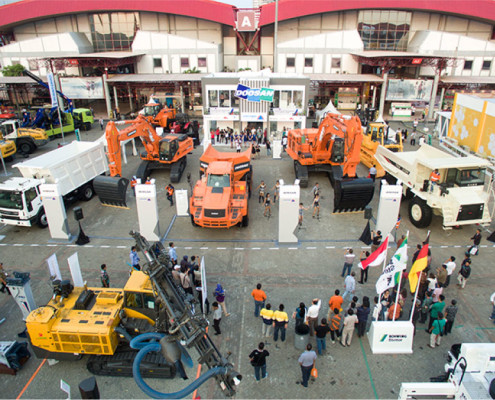
protecfire will be present at Mining Indonesia 2023. Visit us!

protecfire with A-EX will be present at the most renowned international trade fair of the sector, bringing the latest innovations for fire suppression in diesel, hydrogen and electric buses.

protecfire GmbH
Weidekamp 10
23558 Lübeck
GERMANY
E-Mail: info(at)protecfire.de
protecfire ® – all rights reserved